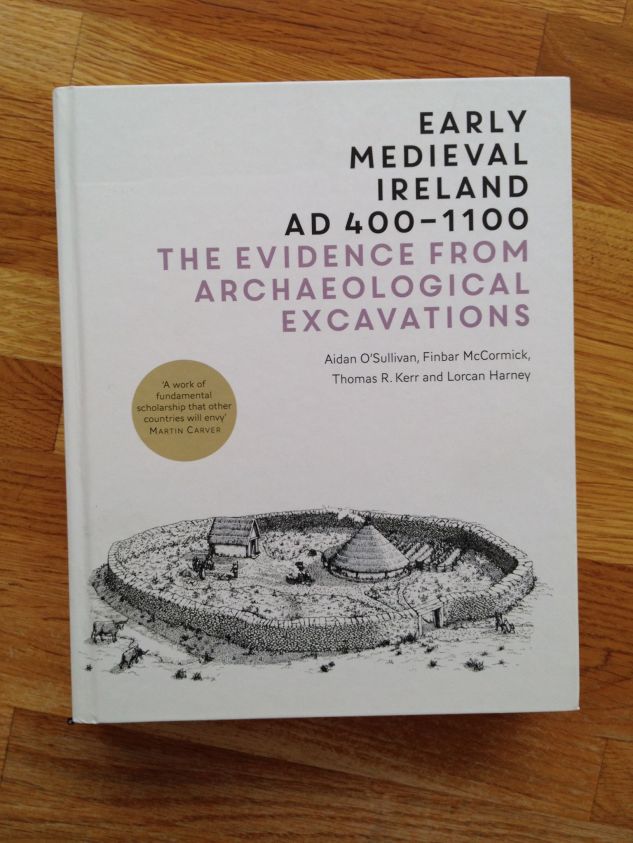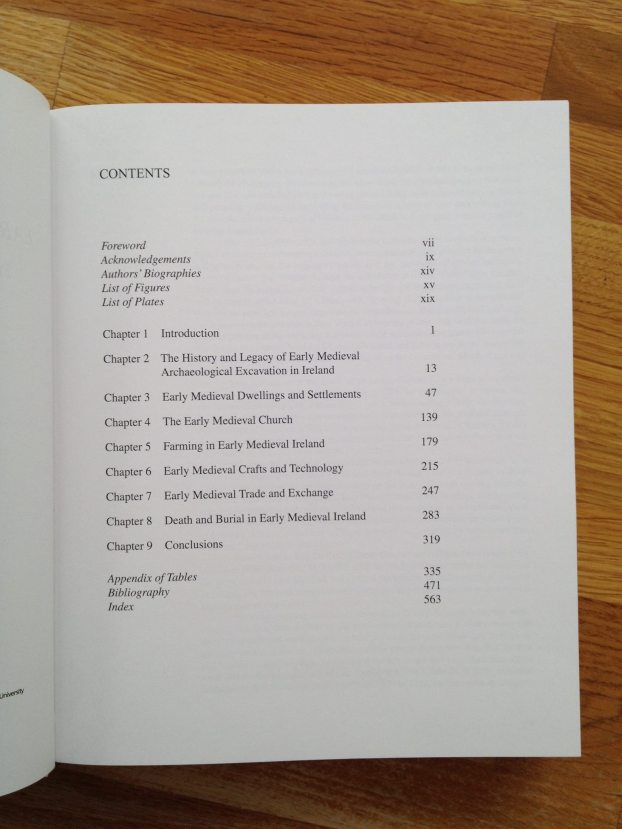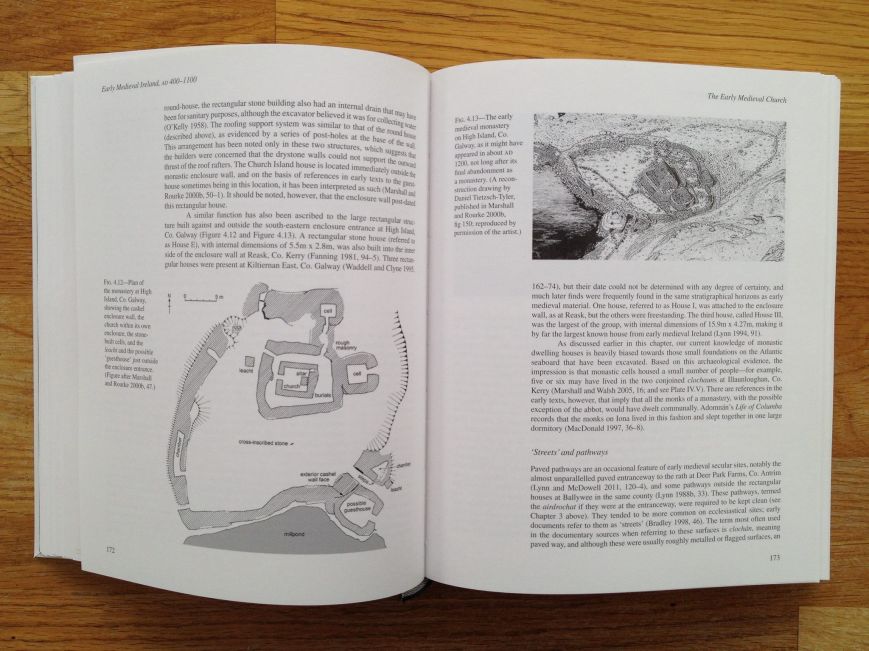
‘Early Medieval Ireland, AD 400-1100. The Evidence from Archaeological Excavations’.
A few days ago saw the official launch of what can only be described as the archaeo-bible for the next generation (and beyond) for scholars of Early Medieval Ireland. Essentially, it contains the most up to date survey, run-down and compilation of everything we thought we knew, everything we have learned, and everything we think we now know, arising from archaeological excavations (1930 to the present). This is the latest offering from the Early Medieval Archaeology Project and is the product of several years of dedicated work and research.
I wasn’t that far away from some of the authors during this time and witnessed just a little of the efforts involved – so naturally, am in no way neutral on this. Bearing institutional and personal loyalty/bias in mind, it nevertheless represents an astonishingly impressive resource. Just look at the contents and length of the bibliography:

Early Medieval Ireland has of course always been the most important, interesting and archaeologically rich period in Irish history.* In terms of the landscape alone, there are more early medieval features, placenames and sites still surviving than any other era. Thanks to modern archaeological methods, discoveries and a national building boom/bust, you can now get a glimpse of the extraordinary range and scope of new material evidence of the period – previously unseen and hidden beneath our feet.

The period not only marks the transition to recorded history, but also marks an explosion in Irish culture, language, society, and activity – much of which forms the bedrock of modern Irish identity. If you ever wondered just how we came to be who and what we are – this will give you some idea of the horse/cow our ancestors rode in on.
Or something.

‘Early Medieval Ireland, AD 400-1100. The Evidence from Archaeological Excavations’.
Now available in bookshops and from www.ria.ie and elsewhere.
See here for background to EMAP project, or follow on facebook.
For impoverished students, or for a flavour of the archaeo-riches within, you can check out previous (pre-print) versions of much of the material here.
__________________________________

“The period not only marks the transition to recorded history, but also marks an explosion in Irish culture, language, society, and activity – much of which forms the bedrock of modern Irish identity. If you ever wondered just how we came to be who and what we are – this will give you some idea of the horse/cow our ancestors rode in on.”
May I disagree on this and point to the Irish age as the formative period during which all these seeds of Irish identity, language and culture germinated? I won’t deny that the Early Mediaeval Period is an explosion of this, but the Later Iron Age is – in my humble opinion, and that of Jim Mallory (see 2013, The Origins of the Irish) – where it all started.
LikeLike
PS: Other than that, brilliant article and I’m looking forward to read the book and then have lots of arguments with Aidan regarding the 5th century 😉
LikeLike
Ah yes, the Later Iron Age… or as I like to call it…the earlier Early Medieval Stuff we don’t have dates for yet 😛
LikeLike
Thanks to Vox for the kind words! Alex, I would agree with you that the 4th/5th century was the manure which fertilised the wonderful garden that was the 6th/7th century when early medieval Ireland took off 😉
LikeLike
I’m sooooo stealing that!
LikeLike
Aidan, I am so offended beyond words :p The Later Iron Age was the precious seeds from which Early Mediaeval Ireland could blossom!!! *grumbles grumbles*
LikeLike
No seriously, joking aside. I think the 5th century is remarkably interesting, certainly archaeologically difficult, but probably the time when things started to change quite rapidly. The Christian religion appears to be affecting not only beliefs, but burial practices, while there were presumably at least some newly converted Christian communities. We also have some hints of early settlements, Garranes being one, and of course we have all the stuff – the imported late Roman amphorae in the late 5th/early 6th. The most recent radiocarbon dating does suggest though the raths start to be constructed in the early 6th century. I think we need to look at these centuries from both the Iron Age and the early medieval perspective, to bridge the chronological period gap, so that we can start to really investigate what was happening in 5th century Ireland.
LikeLike
Thanks Aidan, that’s a fantastic summery. Reminds us of how both the start and end of the Irish Iron Age is problematic. Of course, fifth century Ireland is supremely important. Plus, of course, it’s when a certain Mr. Patricius made his initial mark.
LikeLike
YESSSSSSSSSSSSSSSSS!!! 5th century for the winning! 🙂 Also, *cough* Romans *cough* .
LikeLike
I have to agree here and think it is a steal at the price for what it is. I have one fear – I will be returning to this book again and again – I hope the spine can take it. This has a broader application – for a book that so well serves the topic it needs to stand up to library use.
LikeLike
Here’s hoping, TBS. You’d think modern archaeology books would come with some kind of guarantee… bog proof, mattock resistant, repels evil Nazis from the 1930s… 😉
LikeLike
Just the chance of it lasting – same for archaeology and archaeologists. If it included a portable xrf – bonus. But mostly durability.
LikeLike